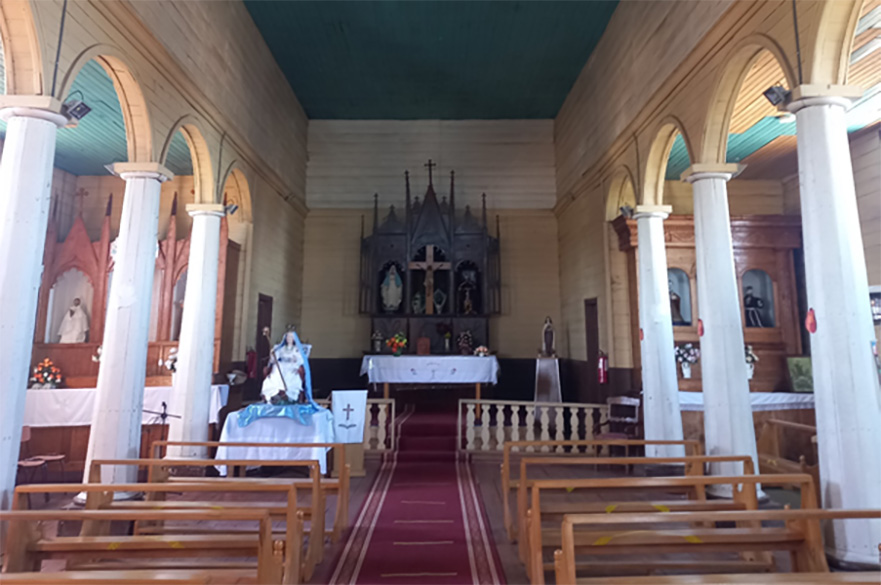New project aims to document the architectural heritage of churches in Chiloé, Chile
Staff from NTU’s Centre for Architecture, Urbanism and Global Heritage (CAUGH) will take part in a new study exploring historic architectural building traditions used in wooden churches in Chile.
By Mitchell North | Published on 19 December 2022
Categories: Research; School of Architecture, Design and the Built Environment;

The project is led by Bernadette Devilat, a Senior Research Fellow based at the Centre for Architecture, Urbanism and Global Heritage (CAUGH) in the School of Architecture, Design and the Built Environment (ADBE). Contributions will also come from Professor Mohamed Gamal Abdelmonem, current Chair in Architecture, and Dr Felipe Lanuza (Research Fellow).
The Churches of Chiloé represent a historic architectural tradition that was first started by Jesuit preachers in the 17th and 18th centuries. There are 151 churches still left standing across the remote area of the Chiloé Archipelago; located in the south of Chile. From that total, 16 are listed as UNESCO World Heritage site.
Due to the cold, windy and rainy climate, the wooden buildings are at the constant mercy of the harsh conditions. They need regular maintenance and replacement of structural materials. Physical conservation has become difficult over time due to lack of resources, the difficulty of access, and a decline in local knowledge and expertise about wooden building techniques.
The project, which will last for two years, will help shed more light on the wooden structures used in construction and inform timely actions of conservation. Up to 15 churches will be selected for study, chosen according to their state of conservation and cultural significance. It is hoped that the results will allow researchers to disseminate virtual information more easily to increase awareness about building techniques.
Speaking about the importance of the project, Bernadette Devilat said:
"Accurate and comprehensive three-dimensional documentation of these structures is urgent and will provide a virtual platform for disseminating vernacular wooden building techniques and for enabling expert technical assessment to ensure their physical conservation."
The project represents a great opportunity for CAUGH to expand its global network of collaborations, having the support of collaborating institutions in Chile: Dr Umberto Bonomo and Andrés Morales, from the Centre for Cultural Heritage at the Pontifical Catholic University of Chile (Centro del Patrimonio Cultural, Pontificia Universidad Católica de Chile - CENPUC), Patricio Álvarez and Natalia Cruz, from the Churches of Chiloé Foundation (Fundación Iglesias Patrimoniales de Chiloé - FIP), and Dr Lorenzo Berg, from the Faculty of Architecture and Urbanism of the University of Chile (Facultad de Arquitectura y Urbanismo, Universidad de Chile - FAU).
The project is being supported by the Endangered Wooden Architecture Programme (EWAP), Oxford Brookes University and with funding provided by Arcadia – a charitable fund of Lisbet Rausing and Peter Baldwin. It started in October 2022 and will end in September 2024, with the first field trip to be carried out next January.